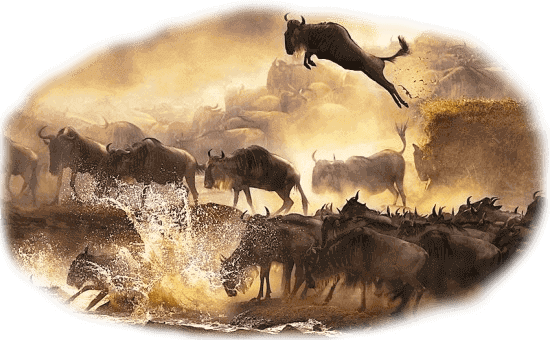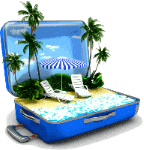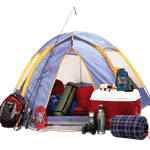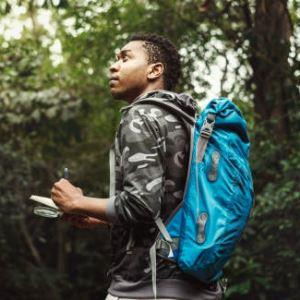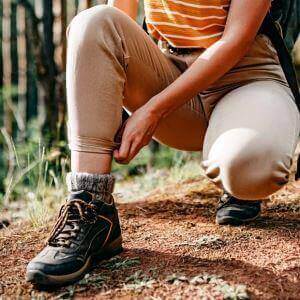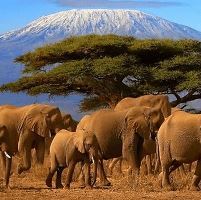 Kenya is one of Africa’s premier safari destinations, offering a thrilling combination of wildlife, landscapes, and cultural experiences. For Dutch tourists, the appeal of a safari in Kenya lies in its unique biodiversity, excellent infrastructure, and opportunities for both adventure and relaxation. From the legendary Maasai Mara to the picturesque savannas of Amboseli, Kenya promises a safari experience like no other. The ideal time to embark on a Kenyan safari is during the dry seasons, specifically from January to March and July to October. These months are perfect for game viewing as animals tend to gather around waterholes, making them easier to spot. The Great Migration, a spectacle involving millions of wildebeest and zebras, typically occurs from July to September in the Maasai Mara, providing an unforgettable sight for wildlife lovers. When it comes to choosing where to go, Dutch travelers are spoiled for choice. The Maasai Mara is a must-see, famous for its high concentration of big cats and dramatic migration scenes. Amboseli National Park offers breathtaking views of Mount Kilimanjaro and large herds of elephants. For a more tranquil experience, Tsavo East and West deliver raw wilderness and fewer crowds, while Lake Nakuru is renowned for its flamingos and rhino population. Preparing for a safari involves a few practical steps. Dutch visitors should secure an e-visa before arrival and ensure their passports are valid for at least six months. Health precautions include getting vaccinated for yellow fever and taking malaria prevention medication. As for packing, essentials include lightweight clothing, a good pair of binoculars, sunscreen, and a hat for sun protection. Several tour packages cater specifically to international visitors, offering a variety of experiences from budget-friendly camping safaris to high-end luxury lodges. Dutch tourists often opt for guided tours that span 7 to 10 days, covering key parks like Maasai Mara, Lake Nakuru, and Amboseli. These packages may also include Dutch-speaking guides, adding convenience and comfort to the journey. For those traveling with children, family-friendly Kenya safaris for Dutch travelers are widely available and often feature child-appropriate accommodations and activities. Kenya’s blend of thrilling wildlife encounters, welcoming hospitality, and scenic beauty makes it an ideal safari destination for Dutch tourists. The country boasts a wide range of ecosystems, from the savannas of the Maasai Mara to the arid landscapes of Samburu and the lush forests of Aberdare. Each region offers unique wildlife experiences, ensuring that no two safaris are ever the same. Whether you're hoping to catch a glimpse of the Big Five or marvel at migratory bird species, Kenya provides countless opportunities to connect with nature. Dutch tourists can enjoy cultural interactions with local communities such as the Maasai, Samburu, and Kikuyu people. These experiences not only enrich the journey but also foster a deeper appreciation for Kenya's diverse heritage. Accommodations range from rustic tented camps to world-class luxury lodges, offering comfort and style in the heart of the wild. For those interested in sustainability, many lodges and safari operators emphasize eco-friendly practices and support for conservation projects. These initiatives provide responsible travelers with peace of mind, knowing their presence contributes to preserving Kenya's natural treasures. With proper planning and the right itinerary, a safari in Kenya promises to be a once-in-a-lifetime experience filled with awe-inspiring moments and unforgettable memories. The warmth of the Kenyan people, the drama of the African landscape, and the thrill of the safari come together to create a travel experience Dutch visitors will treasure forever.
Kenya is one of Africa’s premier safari destinations, offering a thrilling combination of wildlife, landscapes, and cultural experiences. For Dutch tourists, the appeal of a safari in Kenya lies in its unique biodiversity, excellent infrastructure, and opportunities for both adventure and relaxation. From the legendary Maasai Mara to the picturesque savannas of Amboseli, Kenya promises a safari experience like no other. The ideal time to embark on a Kenyan safari is during the dry seasons, specifically from January to March and July to October. These months are perfect for game viewing as animals tend to gather around waterholes, making them easier to spot. The Great Migration, a spectacle involving millions of wildebeest and zebras, typically occurs from July to September in the Maasai Mara, providing an unforgettable sight for wildlife lovers. When it comes to choosing where to go, Dutch travelers are spoiled for choice. The Maasai Mara is a must-see, famous for its high concentration of big cats and dramatic migration scenes. Amboseli National Park offers breathtaking views of Mount Kilimanjaro and large herds of elephants. For a more tranquil experience, Tsavo East and West deliver raw wilderness and fewer crowds, while Lake Nakuru is renowned for its flamingos and rhino population. Preparing for a safari involves a few practical steps. Dutch visitors should secure an e-visa before arrival and ensure their passports are valid for at least six months. Health precautions include getting vaccinated for yellow fever and taking malaria prevention medication. As for packing, essentials include lightweight clothing, a good pair of binoculars, sunscreen, and a hat for sun protection. Several tour packages cater specifically to international visitors, offering a variety of experiences from budget-friendly camping safaris to high-end luxury lodges. Dutch tourists often opt for guided tours that span 7 to 10 days, covering key parks like Maasai Mara, Lake Nakuru, and Amboseli. These packages may also include Dutch-speaking guides, adding convenience and comfort to the journey. For those traveling with children, family-friendly Kenya safaris for Dutch travelers are widely available and often feature child-appropriate accommodations and activities. Kenya’s blend of thrilling wildlife encounters, welcoming hospitality, and scenic beauty makes it an ideal safari destination for Dutch tourists. The country boasts a wide range of ecosystems, from the savannas of the Maasai Mara to the arid landscapes of Samburu and the lush forests of Aberdare. Each region offers unique wildlife experiences, ensuring that no two safaris are ever the same. Whether you're hoping to catch a glimpse of the Big Five or marvel at migratory bird species, Kenya provides countless opportunities to connect with nature. Dutch tourists can enjoy cultural interactions with local communities such as the Maasai, Samburu, and Kikuyu people. These experiences not only enrich the journey but also foster a deeper appreciation for Kenya's diverse heritage. Accommodations range from rustic tented camps to world-class luxury lodges, offering comfort and style in the heart of the wild. For those interested in sustainability, many lodges and safari operators emphasize eco-friendly practices and support for conservation projects. These initiatives provide responsible travelers with peace of mind, knowing their presence contributes to preserving Kenya's natural treasures. With proper planning and the right itinerary, a safari in Kenya promises to be a once-in-a-lifetime experience filled with awe-inspiring moments and unforgettable memories. The warmth of the Kenyan people, the drama of the African landscape, and the thrill of the safari come together to create a travel experience Dutch visitors will treasure forever.
Kenya Safari Information For Dutch Tourists
| Category | Details |
|---|---|
| Best Travel Time | January-March, July-October |
| Top Safari Parks | Maasai Mara, Amboseli, Tsavo, Lake Nakuru |
| Visa Requirements | E-visa required for Dutch passport holders |
| Health Recommendations | Yellow fever vaccine, malaria prophylaxis |
| Recommended Duration | 7 to 10 days |
| Language Spoken | English, Swahili (Dutch guides available) |
| Ideal Tour Types | Guided tours, wildlife viewing, photo safaris |
| Great Migration Season | July to September |
Best Time To Visit Kenya For Dutch Safari Tourists In 2025
For Dutch travelers eager to experience a thrilling Kenyan safari, timing is key to maximizing wildlife sightings and overall enjoyment. Kenya’s weather is influenced by two dry seasons and two rainy seasons, which directly affect animal behavior and visibility in the parks. The long dry season, from July to October, is particularly popular because of the Great Migration in the Maasai Mara, where over a million wildebeest and zebras cross the plains in dramatic fashion. The shorter dry season, from January to March, is also excellent for wildlife viewing, as vegetation is sparse and animals congregate near water sources. The rainy seasons April to June and November to early December can present challenges such as muddy roads and thicker vegetation, which may obscure views of the animals. However, for those who prefer fewer tourists and lush green scenery, the low season may offer its own unique rewards, including discounted safari packages. Dutch tourists should consider their personal preferences and travel goals when deciding on the best season. Photographers and wildlife enthusiasts may favor the dry seasons for clarity and easier sightings. Families traveling with children might opt for school holidays that align with the July to October period, ensuring both convenience and incredible natural spectacle. The best time for Dutch tourists to visit Kenya for safari is during the dry seasons, especially July to October, when wildlife is abundant and the weather is sunny and pleasant. During this period, the savannahs are less dense with vegetation, making it easier to spot wildlife including lions, elephants, giraffes, and leopards. Water sources become fewer, causing animals to gather around rivers and watering holes, providing excellent opportunities for photography and observation. July to October is also the prime time for witnessing the Great Migration in the Maasai Mara. This world-famous natural event features millions of wildebeest, zebras, and antelope crossing the plains, often pursued by predators in dramatic displays of survival. For Dutch tourists looking for iconic safari experiences, this migration offers unparalleled excitement and an unforgettable adventure. January to March, the shorter dry season, is also an excellent window for safaris. The landscapes are slightly greener, but game viewing remains strong, and the weather is warm and pleasant. This period is particularly suitable for birdwatching, as migratory birds flock to Kenya's parks and reserves. The rainy seasons from April to June and in November may pose travel challenges due to muddy terrain and less predictable wildlife movement. However, they also offer unique beauty with blooming flora and a quieter, more peaceful atmosphere in the parks. For travelers who prioritize budget or wish to avoid crowds, the low season may be worth considering. The dry seasons provide the most reliable and rewarding safari conditions for Dutch visitors.
When Should Dutch Travelers Go On Safari In Kenya In 2025?
For Dutch travelers considering a safari in Kenya in 2025, the timing of your visit can significantly impact the quality and uniqueness of your wildlife experience. Kenya enjoys a generally pleasant equatorial climate, but it is marked by distinct dry and rainy seasons that influence animal behavior and accessibility in the national parks. The long dry season, which stretches from July to October, is regarded as the prime period for safaris. This time coincides with the spectacular Great Migration in the Maasai Mara, where millions of wildebeest, zebras, and gazelles journey across the plains, followed closely by predators such as lions and crocodiles. The clear skies, mild temperatures, and thinning vegetation make wildlife viewing exceptionally rewarding. This season also aligns well with Dutch summer holidays, making it especially convenient for family travel. The short dry season, from January to March, is another excellent window for safaris. While the Great Migration is not active during this time, many parks including Amboseli, Tsavo, and Lake Nakuru offer remarkable game viewing. Animals often congregate near permanent water sources, making it easier for tourists to spot elephants, giraffes, buffaloes, and even elusive predators like leopards and cheetahs. This season also offers excellent conditions for birdwatching, as migratory birds add vibrant diversity to Kenya's already rich avian population. Kenya's rainy seasons April to June and November pose more logistical challenges. Heavy rains can make roads impassable and cause some camps and lodges to close temporarily. However, the landscapes become lush and photogenic, with fewer tourists and more budget-friendly rates. For travelers seeking solitude and a more relaxed pace, this can be a rewarding time to visit. Dutch tourists should consider their travel goals, budget, and interests when selecting a safari date. Some may prioritize witnessing dramatic wildlife spectacles, while others may seek tranquility, scenic beauty, or cultural enrichment. For thrill-seekers and wildlife enthusiasts, the July to October window during the Great Migration in the Maasai Mara is a prime opportunity. It not only guarantees frequent sightings of predators in action but also offers ideal conditions for photography and game drives. Birdwatchers and nature lovers may find the January to March period more appealing. This is when migratory bird species are most visible, and the slightly greener landscapes provide a stunning contrast for photos and nature walks. The short dry season is also a great time for seeing baby animals born after the rains, adding a heartwarming dimension to the safari experience. On the other hand, budget-conscious Dutch travelers might explore the rainy seasons, especially April to June. Though wildlife may be more dispersed, the vegetation lush and thick, and roads occasionally challenging, these months come with advantages. Fewer tourists mean a quieter, more personal experience, and many lodges offer significant discounts. The rain brings new life to the land, and the scenery is breathtakingly green. Every season in Kenya has something unique to offer. Whether it’s tracking lions on the savannah, capturing elephants framed by Mount Kilimanjaro, or simply enjoying the hospitality of local communities, 2025 holds the promise of unforgettable adventures. With careful planning and realistic expectations, Dutch travelers can experience Kenya’s beauty in a way that resonates with their travel style and preferences.
Top Kenya Safari Parks And Game Reserves To Explore
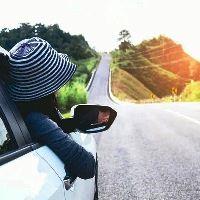 Kenya offers a spectacular array of safari destinations, each with its own unique character, landscapes, and wildlife. For Dutch travelers looking to explore Kenya's natural beauty, the choices are as diverse as they are breathtaking. One of the most iconic destinations is the Maasai Mara National Reserve, renowned for its large population of big cats and the incredible spectacle of the Great Migration. Between July and September, millions of wildebeest and zebras make their way across the Mara River, offering dramatic scenes of survival and predation. Amboseli National Park is another top pick, especially for those who want to photograph elephants against the stunning backdrop of Mount Kilimanjaro. The park is easily accessible and offers a more intimate experience, with herds of elephants often seen up close. It’s also a birdwatcher's paradise, home to over 400 species of birds. Tsavo East and Tsavo West, together forming Kenya’s largest protected area, provide a more rugged and off-the-beaten-track safari experience. Tsavo East is known for its red elephants and open savannah, while Tsavo West offers dramatic landscapes including lava flows, natural springs, and lush green hills. Both parks offer fewer crowds compared to more popular reserves, making them ideal for travelers seeking tranquility. Lake Nakuru National Park is perfect for those interested in birdlife and rhino sightings. The park is famous for its flamingos and white and black rhino populations, and the landscape features waterfalls, forests, and acacia woodlands. For Dutch tourists planning Kenya wildlife tours from the Netherlands, these parks present a range of unforgettable options that cater to various interests and travel styles. Each destination provides a distinct wildlife experience, making Kenya one of the most versatile safari countries in Africa. The Maasai Mara stands out as a must-visit for first-time safari-goers, especially during the Great Migration season. Watching thousands of animals traverse the savannahs and rivers while predators lurk nearby is both thrilling and humbling. The Mara is also known for its high density of lions, cheetahs, and leopards, offering frequent sightings that are ideal for wildlife photography. Amboseli National Park, with its wide-open plains and views of Mount Kilimanjaro, is another highlight. It's particularly famous for its large elephant herds and provides excellent chances for observing these gentle giants in their natural habitat. The park’s wetlands attract a rich variety of birds and other animals, ensuring a diverse safari experience. For those seeking more solitude, Tsavo East and Tsavo West offer vast, untouched wilderness with fewer crowds. These parks are perfect for travelers who appreciate dramatic landscapes, from lava fields to red-soil savannahs, and want to experience Kenya's wild side in a quieter setting. Lake Nakuru, with its flamingos and rhino sanctuary, is well-suited for travelers interested in conservation and avian life. Its compact size makes it a great addition to a multi-park itinerary. Whether it’s your first safari or a return visit, Kenya’s national parks offer an immersive journey into Africa’s iconic wildlife and breathtaking scenery.
Kenya offers a spectacular array of safari destinations, each with its own unique character, landscapes, and wildlife. For Dutch travelers looking to explore Kenya's natural beauty, the choices are as diverse as they are breathtaking. One of the most iconic destinations is the Maasai Mara National Reserve, renowned for its large population of big cats and the incredible spectacle of the Great Migration. Between July and September, millions of wildebeest and zebras make their way across the Mara River, offering dramatic scenes of survival and predation. Amboseli National Park is another top pick, especially for those who want to photograph elephants against the stunning backdrop of Mount Kilimanjaro. The park is easily accessible and offers a more intimate experience, with herds of elephants often seen up close. It’s also a birdwatcher's paradise, home to over 400 species of birds. Tsavo East and Tsavo West, together forming Kenya’s largest protected area, provide a more rugged and off-the-beaten-track safari experience. Tsavo East is known for its red elephants and open savannah, while Tsavo West offers dramatic landscapes including lava flows, natural springs, and lush green hills. Both parks offer fewer crowds compared to more popular reserves, making them ideal for travelers seeking tranquility. Lake Nakuru National Park is perfect for those interested in birdlife and rhino sightings. The park is famous for its flamingos and white and black rhino populations, and the landscape features waterfalls, forests, and acacia woodlands. For Dutch tourists planning Kenya wildlife tours from the Netherlands, these parks present a range of unforgettable options that cater to various interests and travel styles. Each destination provides a distinct wildlife experience, making Kenya one of the most versatile safari countries in Africa. The Maasai Mara stands out as a must-visit for first-time safari-goers, especially during the Great Migration season. Watching thousands of animals traverse the savannahs and rivers while predators lurk nearby is both thrilling and humbling. The Mara is also known for its high density of lions, cheetahs, and leopards, offering frequent sightings that are ideal for wildlife photography. Amboseli National Park, with its wide-open plains and views of Mount Kilimanjaro, is another highlight. It's particularly famous for its large elephant herds and provides excellent chances for observing these gentle giants in their natural habitat. The park’s wetlands attract a rich variety of birds and other animals, ensuring a diverse safari experience. For those seeking more solitude, Tsavo East and Tsavo West offer vast, untouched wilderness with fewer crowds. These parks are perfect for travelers who appreciate dramatic landscapes, from lava fields to red-soil savannahs, and want to experience Kenya's wild side in a quieter setting. Lake Nakuru, with its flamingos and rhino sanctuary, is well-suited for travelers interested in conservation and avian life. Its compact size makes it a great addition to a multi-park itinerary. Whether it’s your first safari or a return visit, Kenya’s national parks offer an immersive journey into Africa’s iconic wildlife and breathtaking scenery.
Which Kenya Safari Parks Are Perfect For Dutch Tourists?
Kenya is a land of remarkable biodiversity, where Dutch tourists can experience the thrill of seeing Africa’s iconic wildlife in some of the world’s most renowned game reserves. Whether you are a first-time visitor or a returning enthusiast, knowing which animals to look out for can help shape an unforgettable safari adventure. Here are the top wildlife to see on a Kenya safari for Dutch visitors:
- African Elephants: Amboseli National Park is one of the best places in Africa to see large herds of elephants. The open plains and frequent gatherings near water sources provide excellent photo opportunities, especially with Mount Kilimanjaro in the background.
- Lions and Big Cats: The Maasai Mara is famed for its big cat population. Lions, cheetahs, and leopards can often be seen hunting or lounging under acacia trees. The annual Great Migration also draws predators, making sightings even more dynamic.
- Giraffes and Zebras: Common across most parks, giraffes and zebras add elegance and beauty to the landscape. The Rothschild's giraffe can be spotted in Lake Nakuru National Park, while zebras are abundant in the Mara and Tsavo parks.
- Rhinos: Lake Nakuru is a stronghold for both black and white rhinos. Thanks to focused conservation efforts, the park offers one of the best chances to see these endangered species in the wild.
- Hippos and Crocodiles: Rivers like the Mara and Talek offer scenes of hippos basking in the sun or crocodiles lurking by the banks, particularly during the migration river crossings.
- Flamingos and Birdlife: Kenya is a paradise for birdwatchers. Lake Nakuru and Lake Bogoria attract thousands of flamingos, creating a vibrant pink horizon. Over 1,100 bird species can be observed throughout the country.
Kenya’s national parks provide Dutch tourists with diverse and awe-inspiring encounters with Africa’s most celebrated animals. Whether you're marveling at a lion’s roar or spotting birds in flight, the wildlife of Kenya ensures a safari you will never forget.
Travel Tips For Dutch Tourists Planning A Kenya Safari
Planning a safari in Kenya is an exciting journey, and for Dutch tourists, it requires a mix of practical preparation and cultural awareness to ensure a smooth and rewarding experience. From travel documents to packing the right gear, a bit of preparation goes a long way in maximizing your adventure. All Dutch tourists must hold a passport that is valid for at least six months from the date of entry into Kenya. Additionally, an e-visa must be obtained online before departure. The process is straightforward and can be completed in just a few days, but it's best to apply early to avoid last-minute issues. Health preparations are also essential. The Kenyan government requires proof of a yellow fever vaccination for travelers arriving from countries with risk of yellow fever transmission, including layovers in affected areas. It is also strongly recommended to take malaria prophylaxis, as malaria is present in many safari regions. Consult a travel clinic in the Netherlands several weeks before your trip for up-to-date health advice. Packing smart is crucial for a successful safari. Lightweight, breathable clothing in neutral colors is ideal for blending into the environment and staying cool. Don’t forget sunscreen, insect repellent, a wide-brimmed hat, and a good pair of binoculars. A power bank, camera, and a reusable water bottle are also great to bring along. Culturally, English is widely spoken in Kenya, which helps ease communication for Dutch travelers. However, learning a few Swahili phrases can enhance your interaction with local communities and guides. Knowing how Dutch tourists can prepare for a Kenya safari ensures peace of mind and a more immersive experience. A safari adventure is not just about spotting the Big Five; it also involves adapting to the African environment, respecting local cultures, and being well-equipped to handle the unexpected. For Dutch travelers, taking a proactive approach to planning can significantly enhance their time in Kenya. The first step involves securing the appropriate documentation. This includes a valid passport with at least six months of validity and an approved e-visa, which should be applied for online before departure. It's important to double-check visa processing times and carry printed confirmations for reference during immigration checks. Health preparation is equally important. In addition to a yellow fever vaccination, Dutch tourists should consider anti-malarial medication, especially if visiting high-risk zones. It’s wise to consult a travel doctor or health clinic in the Netherlands at least a month prior to the trip for any other recommended vaccines or medical precautions. Next is packing. Neutral-colored, breathable clothing works best for blending in during game drives while providing comfort in hot conditions. Essentials also include insect repellent, sunscreen, a reusable water bottle, a flashlight or headlamp, and high-quality binoculars. A compact first aid kit can also come in handy during remote excursions. Cultural sensitivity enhances the experience. While English is widely spoken, learning a few basic Swahili greetings fosters goodwill and enriches exchanges with local guides and community members. When Dutch tourists invest in thorough preparation, they are rewarded with a smoother, safer, and more authentic Kenyan safari. Every detail from vaccines to visa forms plays a part in creating memories that last a lifetime.
What Should Dutch Tourists Know Before A Kenya Safari Trip?
A Kenya safari is a dream trip for many Dutch travelers, but it requires thoughtful preparation to ensure a safe, comfortable, and fulfilling experience. From health precautions to cultural tips, being ready for the African bush will elevate your adventure from memorable to unforgettable. One of the first steps for any Dutch tourist is to make sure your passport is valid for at least six months from your arrival date in Kenya. Applying for an e-visa in advance is mandatory and relatively straightforward via the official Kenyan immigration website. Don’t leave it until the last minute processing may take a few days. Health is another critical area of preparation. A yellow fever vaccination is mandatory, especially if you are transiting through countries where the disease is prevalent. Dutch health authorities also recommend malaria prophylaxis for visitors traveling to Kenya’s safari regions. Book an appointment with a travel health clinic well in advance to get all the recommended vaccinations and medical advice tailored to your itinerary. When it comes to packing, think practical and lightweight. Neutral-colored clothing that is breathable works best for game drives. You’ll also need sun protection, insect repellent, and comfortable walking shoes. Don’t forget a good pair of binoculars and a quality camera to capture those once-in-a-lifetime wildlife sightings. Understanding local customs and etiquette will also go a long way. While English is widely spoken, learning basic Swahili greetings such as "Jambo" (hello) and "Asante" (thank you) can enrich your cultural experience and build goodwill with local communities. Always ask before photographing people, and respect park rules when it comes to wildlife viewing and conservation practices. Planning your trip through a reputable safari operator can make all the difference. Look for companies that specialize in customized itineraries and have strong reviews from European travelers. Guided tours with Dutch-speaking guides are available and can significantly enhance your understanding and enjoyment of the trip. Learning how one can prepare for a Kenya safari is more than just ticking off a checklist it’s about aligning expectations, respecting the environment and people, and maximizing the wonder of being in one of the world’s greatest safari destinations.
Safari Tour Packages In Kenya For Dutch Travelers In 2025
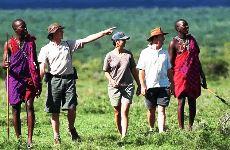 Planning a safari adventure in Kenya can be overwhelming given the country’s vast wilderness and variety of tour options. For Dutch travelers, choosing the right safari package depends on factors such as budget, travel preferences, wildlife interests, and duration of stay. Fortunately, Kenya’s tourism infrastructure is well-developed, offering tailored safari experiences that cater specifically to international visitors, including those from the Netherlands. Most Dutch tourists opt for guided tour packages that range from 7 to 10 days. These often begin with a visit to the Maasai Mara National Reserve, renowned for its lion population and the dramatic scenes of the Great Migration. These packages typically include game drives, professional English-speaking (and sometimes Dutch-speaking) guides, accommodation in tented camps or lodges, and all transport arrangements. Some luxury tours even offer private 4x4 vehicles and charter flights between destinations to maximize comfort and time. For travelers looking for variety, a combined itinerary including Lake Nakuru and Amboseli National Park offers a richer experience. Lake Nakuru is famous for its pink flamingos and protected rhino populations, while Amboseli provides postcard views of elephants roaming beneath Mount Kilimanjaro. More adventurous packages may include stops at Tsavo East and Tsavo West, ideal for those who prefer off-the-beaten-path travel with fewer crowds. Budget-conscious Dutch tourists can also find value in mid-range packages that feature group safaris with shared vehicles and basic lodgings. These packages maintain quality wildlife experiences while keeping costs more affordable. Many tour operators offer themed packages such as birdwatching tours, photography-focused safaris, or family-friendly adventures, complete with kid-appropriate accommodations and activities. To ensure a smooth experience, it’s essential to book with reputable tour operators that are experienced in catering to European travelers. Many of these companies offer online support in Dutch or provide detailed travel guides to help with visa applications, packing lists, and health precautions. Several even offer pre-trip briefings or online planning consultations. Among the best Kenya safari packages for Dutch tourists are those that balance iconic wildlife destinations with cultural interactions and eco-conscious travel. Packages that include visits to local Maasai villages or conservation projects allow travelers to connect more deeply with the people and land they’re exploring. Whether seeking luxury or simplicity, a well-planned Kenya safari will deliver unforgettable memories, from the roar of a lion at dawn to the peaceful stillness of a savannah sunset. Dutch travelers are sure to find a safari package that aligns with their style, interests, and sense of adventure.
Planning a safari adventure in Kenya can be overwhelming given the country’s vast wilderness and variety of tour options. For Dutch travelers, choosing the right safari package depends on factors such as budget, travel preferences, wildlife interests, and duration of stay. Fortunately, Kenya’s tourism infrastructure is well-developed, offering tailored safari experiences that cater specifically to international visitors, including those from the Netherlands. Most Dutch tourists opt for guided tour packages that range from 7 to 10 days. These often begin with a visit to the Maasai Mara National Reserve, renowned for its lion population and the dramatic scenes of the Great Migration. These packages typically include game drives, professional English-speaking (and sometimes Dutch-speaking) guides, accommodation in tented camps or lodges, and all transport arrangements. Some luxury tours even offer private 4x4 vehicles and charter flights between destinations to maximize comfort and time. For travelers looking for variety, a combined itinerary including Lake Nakuru and Amboseli National Park offers a richer experience. Lake Nakuru is famous for its pink flamingos and protected rhino populations, while Amboseli provides postcard views of elephants roaming beneath Mount Kilimanjaro. More adventurous packages may include stops at Tsavo East and Tsavo West, ideal for those who prefer off-the-beaten-path travel with fewer crowds. Budget-conscious Dutch tourists can also find value in mid-range packages that feature group safaris with shared vehicles and basic lodgings. These packages maintain quality wildlife experiences while keeping costs more affordable. Many tour operators offer themed packages such as birdwatching tours, photography-focused safaris, or family-friendly adventures, complete with kid-appropriate accommodations and activities. To ensure a smooth experience, it’s essential to book with reputable tour operators that are experienced in catering to European travelers. Many of these companies offer online support in Dutch or provide detailed travel guides to help with visa applications, packing lists, and health precautions. Several even offer pre-trip briefings or online planning consultations. Among the best Kenya safari packages for Dutch tourists are those that balance iconic wildlife destinations with cultural interactions and eco-conscious travel. Packages that include visits to local Maasai villages or conservation projects allow travelers to connect more deeply with the people and land they’re exploring. Whether seeking luxury or simplicity, a well-planned Kenya safari will deliver unforgettable memories, from the roar of a lion at dawn to the peaceful stillness of a savannah sunset. Dutch travelers are sure to find a safari package that aligns with their style, interests, and sense of adventure.
Which Kenya Safari Packages Suit Dutch Visitors In 2025?
Exploring Kenya’s rich wildlife and scenic beauty can be both thrilling and convenient when you choose the right safari package. For Dutch travelers, there are tailored options available that meet a variety of preferences whether it’s luxury, adventure, photography, or family travel. With well-planned itineraries and professional guides, these packages make the entire safari experience seamless and enriching. Here are some of the most popular safari package types available:
- Luxury Lodge Safaris: These packages are perfect for travelers who want comfort without compromising on authentic experiences. Accommodations include high-end lodges or tented camps with en-suite facilities, gourmet meals, and even private plunge pools. Expect first-class service, expert guides, and exclusive access to top wildlife areas like the Maasai Mara and Amboseli.
- Budget Camping Safaris: Ideal for adventurous Dutch tourists looking to keep costs down, budget safaris offer basic but comfortable tent accommodations, shared facilities, and group game drives. They’re a great way to experience the wild up close without the frills.
- Family-Friendly Safaris: Specially designed with children in mind, these tours include shorter travel distances, kid-friendly lodges, and educational wildlife experiences. Some packages include cultural visits to Maasai villages, wildlife centers, or nature walks with local guides.
- Photographic Safaris: These are tailored for photography enthusiasts and include expert guides, custom vehicles with camera mounts, and prime shooting times during golden hours. Photographers can capture lions on the hunt or elephants silhouetted against Mount Kilimanjaro.
- Fly-In Safaris: For those who prefer to skip long road trips, fly-in safaris use light aircraft to connect destinations quickly. This maximizes your time in the parks and adds a touch of luxury and efficiency to your journey.
Booking through reputable operators familiar with European travelers ensures a smooth experience. Some even offer Dutch-speaking guides or itinerary planners. The best Kenya safari tour packages are those that combine game viewing, cultural insight, and comfort delivering a truly unforgettable African adventure.
